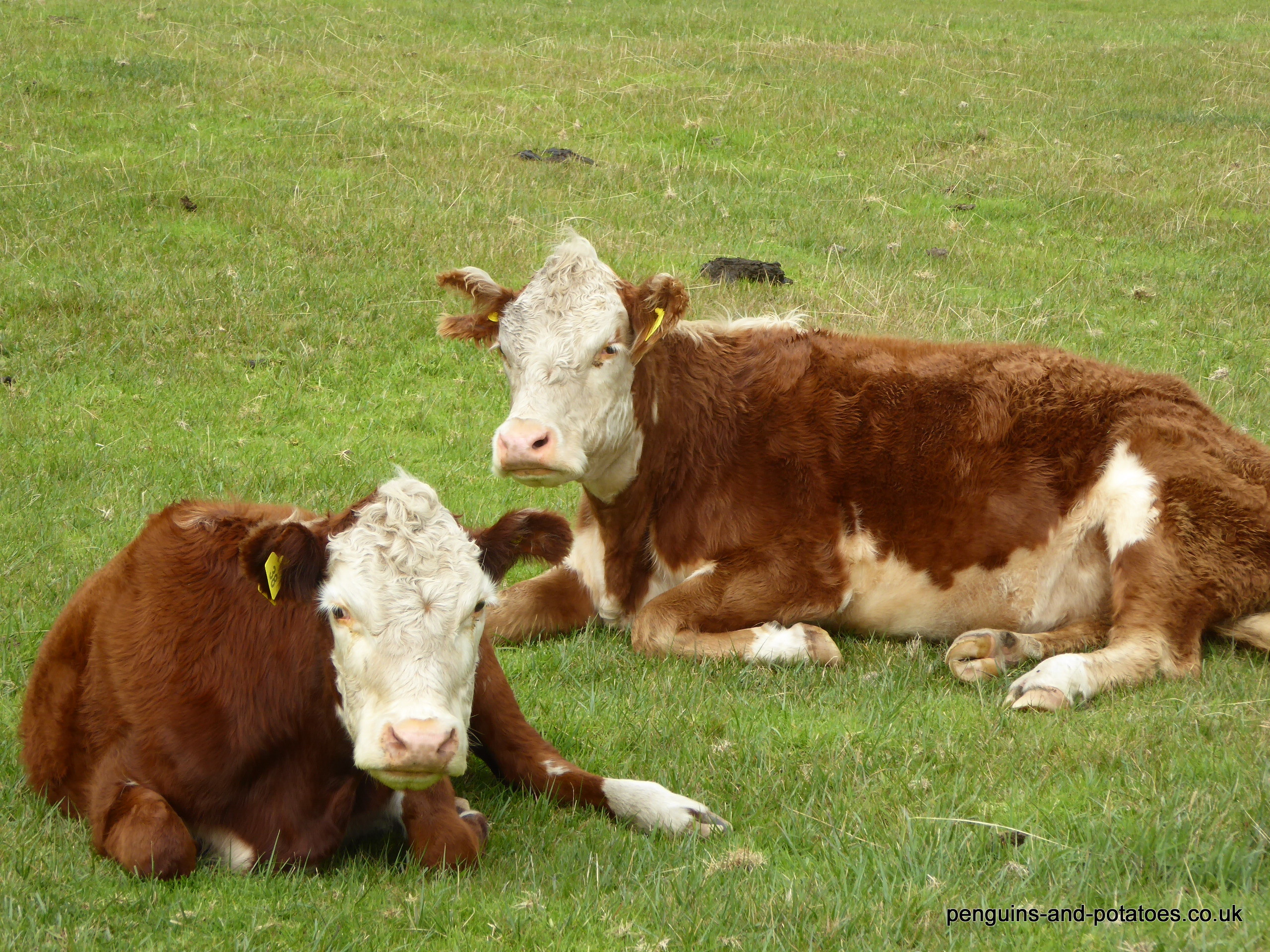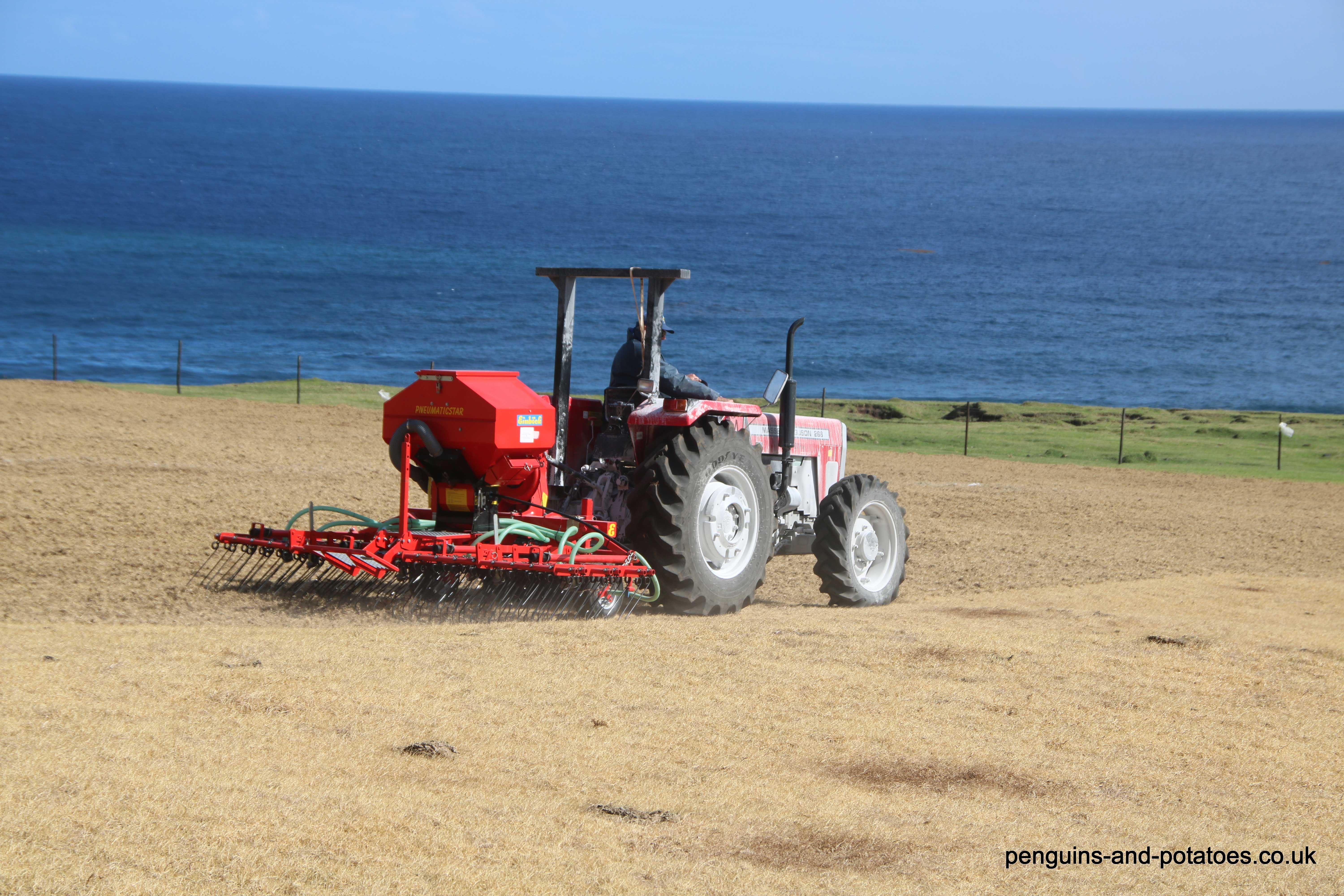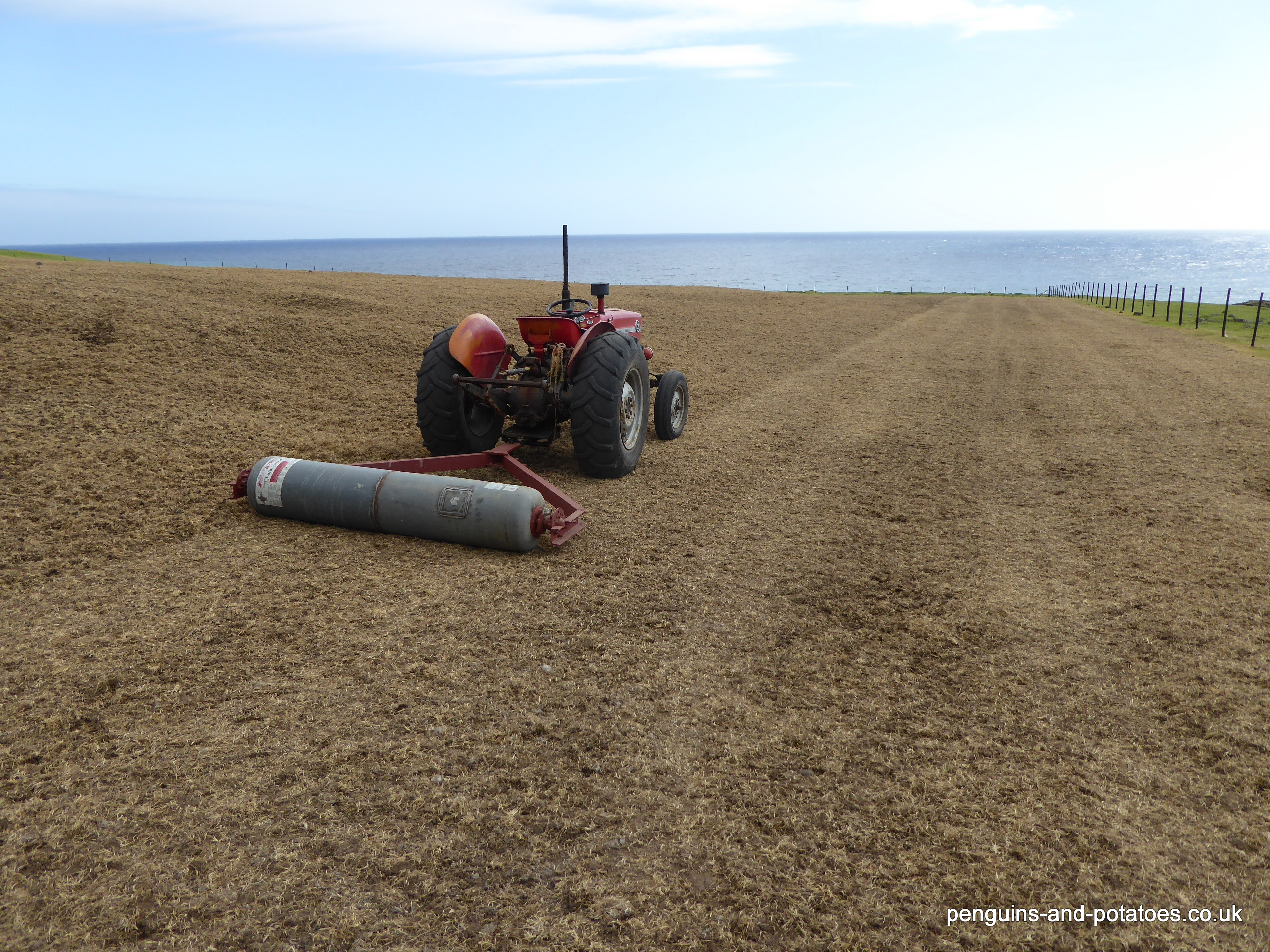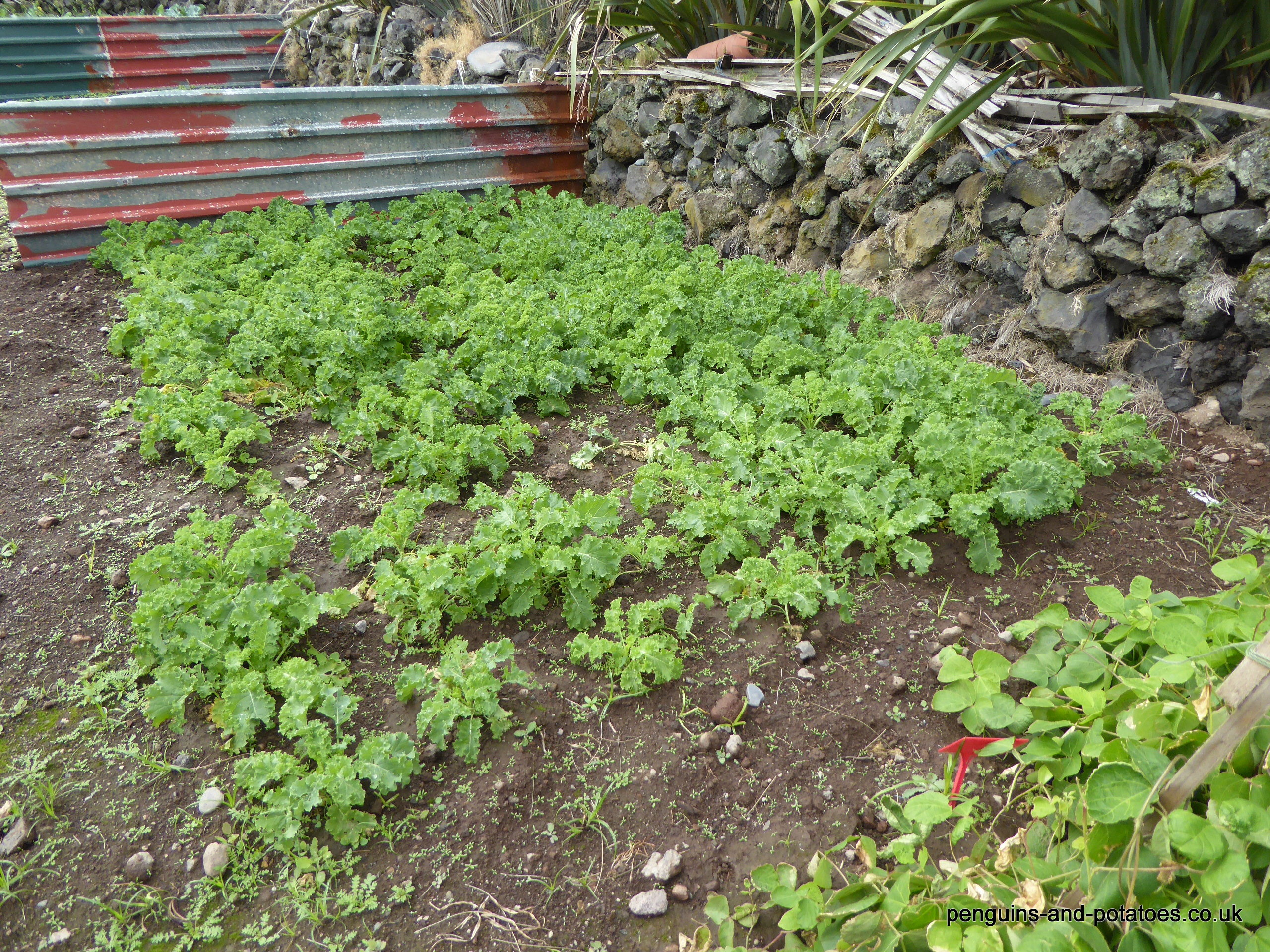Part of my work on Tristan da Cunha involves keeping the islanders informed as to what we are doing, and why. It is important that I try to develop a general understanding of the steps that we are taking, the advances that we are making, and our overall objectives.
I have just sent out the following notes, which may be of interest off-island as well.
TDC Farming News Issue 3 April 2018
Cattle Ear Tags
I am sure that everyone has seen the new ear tags in the cattle, which were applied last week. There is a high-visibility tag in one ear, and a little button tag in the other ear, each with the same number. These tags will serve as an individual ID for each animal, and they will enable the Department to maintain full records of each animal from birth to death, including breeding details, treatments, and ownership details. All cattle on the Settlement Plain have been tagged. From now on, soon after calves are born they will be tagged.
Cattle owners may choose, if they wish, not to cut-mark their calves in the future since the ear tags will provide a clear identification of each animal.
Vannessa has a list of owners and numbers, which is available if anyone wishes to check what numbers their own cattle carry.
Cattle owners are asked to please notify the Department if they give or sell an animal to another person, so that the records can be updated. Also the Department needs to be informed in the event of the death of an animal, whether through slaughter or any other cause. Also, cattle owners are asked to please notify the Department in the event of the loss of an ear tag, so that a replacement tag can be fitted.

Reseeding
As part of the Department’s programme of pasture improvement, a 4-acre plot just to the west side of Jenny’s Watron has been fenced off and reseeded.
The area inside the fence was sprayed off some three weeks ago, and in the last week the ground has been limed, fertilised, a seed-bed prepared, a grass seed mixture sown, and finally the area was rolled.
The seed mixture has been especially prepared for us by a specialist seeds company in Scotland, based on their experience of broadly similar conditions in the western Highlands. The mixture includes specific varieties of Italian ryegrass, perennial ryegrass and cocksfoot, with some white clover. These grasses are high-yielding and high-digestibility varieties. If we are able to obtain good establishment of these productive grasses they should go some way towards addressing the acute overgrazing that we see on the island (together of course with all the other actions that are needed, including the ongoing application of lime and fertiliser and the reduction in herd size)
If weather conditions permit, we hope to reseed a large area at Pigbite, where the alluvial deposits brought down by the floods a year ago currently represent a net loss of grazing land. It would be very good if we can in this way recover some of the land lost to the floods.
It is also intended to reseed the Hospital Field, once all the débris left by Gulliford Try has finally been cleared.
It was mentioned above that the reseeded area at Jenny’s Watron was rolled after sowing the grass seed. The reason for this is that rolling helps boost germination, and it helps grass establishment by conserving soil moisture. The rolling was carried out by an island-made machine comprising two recycled gas bottles welded together and filled with concrete – it is a perfect size and weight, and cost virtually nothing!


Sheep Breeding
Our new burdizzos (bloodless castrators) arrived some weeks ago, and the Department spent a day selecting ten of the best ram lambs to be kept, and castrating all the rest. This operation should be carried out every year from now on. In the meantime we are hopeful that we can bring some fresh blood into the island sheep by using AI. This is a much more complicated procedure than cattle AI, and we are in touch with a specialist who may be able to help us with this breeding programme.
Gypsum for Potatoes
We had a very positive reaction to our notice about applying gypsum to the ground before planting potatoes, in order to improve cell structure and keeping qualities of the potatoes, with a likely reduction in the incidence of soft rot. An order is now being processed for two tons of gypsum, which will be sold through the Agrishop.
Winter Feed for Cattle
A number of people have taken us up on the offer of seed and lime for the winter production of fodder crops in the Patches, these crops include swede, turnip and kale. The Department has also planted some of these crops in the Mission Gardens, to give us first-hand experience of the problems and potential for this sort of winter fodder production.
Fruit Trees
We hope to repeat the programme we carried out last year for the import of young fruit trees – apples, pears and plums. However, our supplier from last year has just told us that he is only prepared to supply minimum quantities of one hectare (2.4 acres) per variety! We are looking now for a nursery that can be more accommodating.

Greenhouses and Gardens
On a small scale, we are now in production of our winter crops including broccoli, cauliflower and cabbages, and for the first time crinkly kale should be in the shop this week. In the greenhouses, cucumbers and green peppers are in production, and we should be shopping tomatoes again very soon. We have some lettuces that are now ready, although we have had a bit of a set-back in that some lettuce varieties that we planted are not the varieties that it said on the packet. The intention is to grow salad crops, including lettuces and radishes, throughout the winter months.
A large consignment of produce was sold to the cruise ship Le Lyriol, and we hope to keep in touch with the cruise ships in order to produce to their requirements in future years.
We have quite a number of indoor and outdoor ornamental plants in the greenhouses, and it is intended to set up a day for these to be sold outside the Agrishop very soon.
Bee and I hope to be off on our annual leave on the Edinburgh – we wish everyone a pleasant winter with enough rain to obtain good grass germination without it being too much for personal comfort!
Alasdair Wyllie – Agriculture Adviser and editor of TDC Farming News
